
Do you have a question about the Panasonic Viera TC-P42ST30 and is the answer not in the manual?
| Screen Size | 42 inches |
|---|---|
| Display Type | Plasma |
| Resolution | 1920 x 1080 |
| HDMI Ports | 3 |
| USB Ports | 2 |
| Wi-Fi | Yes |
| Ethernet Port | Yes |
| 3D Technology | Active 3D |
| Refresh Rate | 600Hz Sub-field Drive |
| 3D Capable | Yes |
| Weight | 56.2 lbs |
| Contrast Ratio | 5, 000, 000:1 |
| Smart TV | Yes |
Illustrates connections for various multimedia devices like VCR, amplifier, speakers, etc.
General safety guidelines for operating the apparatus.
Warnings and precautions related to TV set installation and handling.
Safety guidelines for handling and using the AC power cord.
Precautions to take when moving the television to prevent damage or injury.
Safety precautions for using and handling 3D eyewear.
Guidelines to ensure child safety around the TV and furniture.
Statement regarding FCC limits for radiation exposure.
Compliance notice for Canadian regulations.
Lists items included with the TV such as remote, batteries, manual, etc.
Lists optional items like 3D Eyewear and communication camera.
Step-by-step instructions for assembling the TV pedestal.
Instructions for attaching the assembled pedestal to the TV.
Procedure for detaching the pedestal from the TV.
Guide for connecting the power cord to the TV and outlet.
Identifies and locates various input/output ports on the TV.
Instructions for connecting TV antenna or cable service.
Instructions for connecting audio/video sources via various cables.
Identifies controls and indicators on the front of the TV.
Explains the functions of buttons on the remote control.
Steps to select language, country, and viewing environment (Home use).
Guide for setting up antenna/cable connections and scanning channels.
Naming connected devices for easier input selection.
Steps to set up network connection (Ethernet or Wireless).
Setting the TV's date and time, manually or automatically.
Confirmation of setup completion and how to re-access setup.
How to tune to channels using the remote or TV buttons.
Explains SAP (Secondary Audio Programming) and Closed Caption features.
How to view channel banners and program information.
How to change aspect modes and zoom settings.
How to set, call up, and delete favorite channels.
How to access and select different input sources for viewing.
Using the TV remote or the equipment's remote for control.
Safety and comfort guidelines for watching 3D content.
Steps for wearing and using the 3D eyewear correctly.
How to switch between 3D and 2D viewing modes.
Fine-tuning 3D depth, parallax, and other visual settings.
Overview of supported content types (photos, videos, music).
Instructions for inserting and removing storage media.
Steps to browse and play media files.
Adjusting frame, effects, transition, and display interval for slideshows.
Selecting music to play during slideshows.
Options to sort photos by date, month, or folders.
Steps to combine two photos to create a 3D image.
Settings for repeat playback of video files.
Lists compatible photo, video, and music file formats.
Settings for repeat playback and selecting music.
Adjusting picture, audio, and VIERA Link settings within the media player.
How to connect devices for VIERA Link functionality.
Steps to enable and customize VIERA Link features in the TV's setup menu.
Details on Automatic Input Switching, Power Link, and Energy Saving.
Steps to select and set options within the VIERA Link menu.
Managing speaker output and operating devices via TV remote.
Accessing cloud-based services and apps via the internet.
Sharing media content (photos, videos, music) over a home network.
Connecting, viewing, and managing network cameras via the TV.
Guidance on selecting connection type based on setup.
Steps for wired (Ethernet) or wireless connections to the internet.
Navigating the menu to find network settings.
Testing the network connection status and internet connectivity.
Setting up or changing wireless network connection details.
Managing network link names, cameras, and software updates.
Setting up antenna/cable reception and performing channel scans.
Manually editing, adding, or skipping channels.
Checking signal strength for optimal reception.
Fine-tuning picture elements like 3D Y/C filter, color matrix, and motion.
Customizing sound settings like bass, treble, surround, and volume.
Configuring the TV to turn on or off automatically at specific times.
Setting up parental controls to block channels or programs.
Configuring and displaying closed captioning information.
Configuring 3D viewing options and preferences.
Selecting how channels are surfed (all, favorite, digital/analog).
Choosing the menu and on-screen display language.
Setting the current date and time for the TV.
Configuring antenna and cable connections and channel scanning.
Naming input terminals for easier identification.
Settings to prevent image retention on the plasma screen.
Configuring network connection and internet access.
Managing VIERA Link features for connected devices.
Adjusting power saving modes and auto shut-off features.
Selecting the keyboard layout for USB keyboards.
Accessing settings like auto power, image viewer auto play, and VIERA Connect banner.
Option to restart the initial TV setup process.
Displaying TV model, software version, and license information.
Restoring all TV settings to their original factory defaults.
Lists compatible data formats for media playback on SD card/USB/DLNA.
Guidelines for safely handling and using SD cards with the TV.
Converting 2D content to 3D and copyright considerations.
Information on connecting devices via HDMI, including signal compatibility.
How to connect audio systems for surround sound output.
How Closed Caption functions with HDMI connections and external devices.
Steps to resolve issues with no audio output from the TV.
Diagnosing and fixing unusual sound problems.
Steps to take if the remote control is not functioning correctly.
Explains why the ANT/Cable input option may be grayed out.
Steps to ensure VIERA Connect functions correctly.
Common issues and solutions for 3D viewing problems.
Explains why 3D eyewear may turn off automatically.
Information regarding community regulations for product disposal and recycling.
Section to record model and serial numbers for warranty and identification.
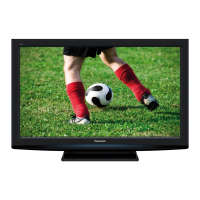
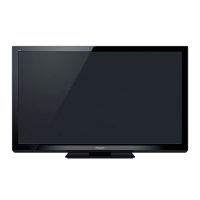
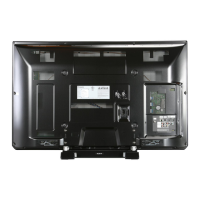
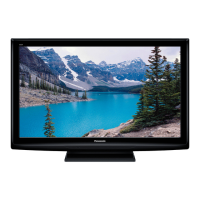
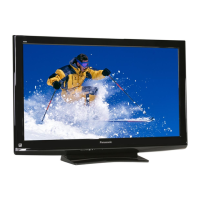
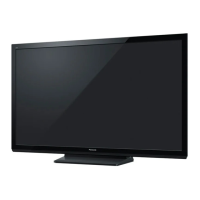
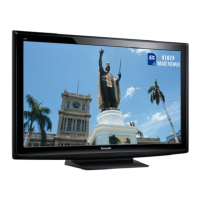
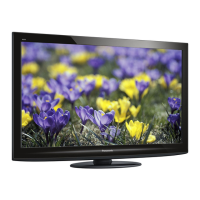
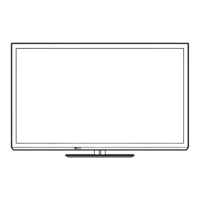

